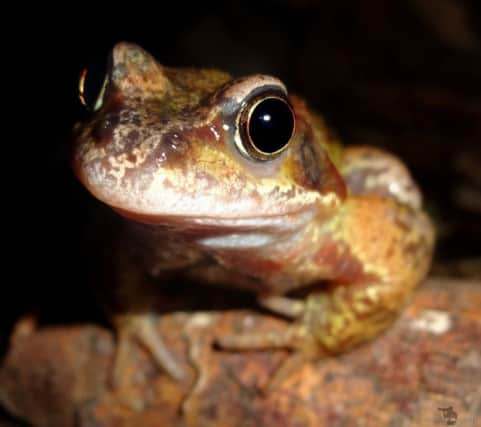Country & Coast: Breeding grounds of aquatic life are disappearing fast


They can vary in size from little more than a square yard to the size of a couple of football pitches, but the one thing they have in common to qualify for the designation of pond is that they hold water for at least four months of the year.
Ponds hold impressive concentrations of aquatic life, and I never really know what to expect at any of the three or four I visit on a regular basis. The largest of these, at Tong Park near Baildon, like so many of Yorkshire’s ponds was formed by a mill dam. The smallest is on the edge of nearby woodland and was created a few years back when a large conifer was brought crashing down by a gale and the rootpit filled with water.
Advertisement
Hide AdAdvertisement
Hide AdIt was here that I found my first clump of frogspawn jelly of the year on March 4, a good fortnight earlier than I had done last year. That puts them on course to produce tadpoles in the last week of March, and three months after that there will be a sudden population explosion of froglets.
Common toads, however, seem to wait a couple of weeks later before they produce their spawn, which is not deposited in a large mass but instead is stretched out in long necklaces among the pond’s submerged plants.
Toad and frog tadpoles can also be told apart: if you study them closely you will see that the latter have slightly speckled gold or brownish markings.
My favourite ponds to date are to be found in Yorkshire Water’s woodland at Timble Ings between Wharfedale and the Washburn Valley, where the frog and toad populations are as large as I have seen anywhere. That success is highly encouraging because a disease which affects amphibians has arrived in the UK from the Continent, where it has virtually wiped out some species.
Advertisement
Hide AdAdvertisement
Hide AdChytridiomycosis is a disease that is caused by a fungus which infects the skin of adults and the mouths of tadpoles. A study here has shown that chytridiomycosis has now become widespread in England, Scotland and Wales, but so far it has not had the devastating consequences in Europe.
Another disease known as frog ranavirus, or “red leg”, has been attacking English frogs since the 1980s, causing internal bleeding. If you find several emaciated dead frogs in one place it’s the likely cause.
The most exciting event in the lifecycle of British amphibians is the migration of toads to their ancestral breeding ponds. They always follow the same routes and frequently these involve the traverse of a main road with tragic consequences. You will see “Toad Crossing” signs at these locations, and anyone concerned for their wellbeing can sign up on the internet to help them to safety.
To find your nearest crossing and to volunteer as an official Toad Patroller, visit www.froglife.org